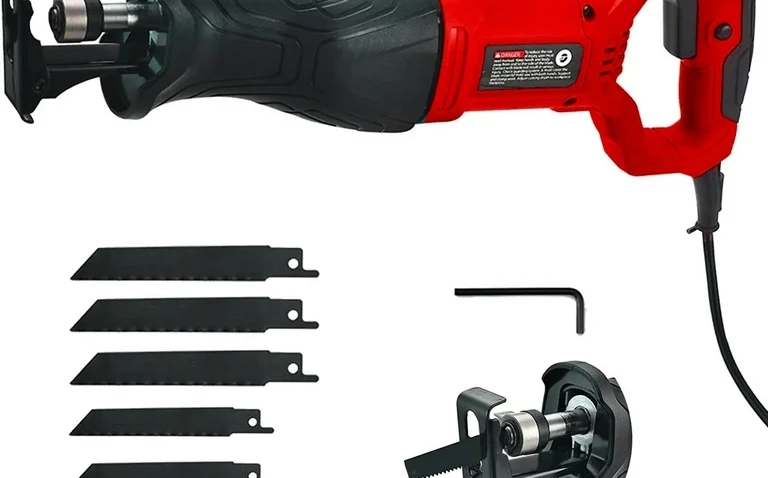
Electric Reciprocating Saw: A Versatile Tool for Demanding Tasks
An electric reciprocating saw, often referred to as a “sawzall,” is a power tool that has become indispensable for many DIY enthusiasts and professionals alike. Its unique design, featuring a reciprocating blade that moves back and forth in a straight line, allows it to cut through a wide variety of materials with ease. Whether you’re cutting wood, metal, or plastic, the electric reciprocating saw is a versatile tool that can handle a wide range of tasks.
Understanding the Basics
The electric reciprocating saw consists of several key components:
- Motor: The motor is the heart of the saw, providing the power to drive the blade.
- Reciprocating mechanism: This mechanism converts the rotary motion of the motor into a linear, back-and-forth motion.
- Blade holder: The blade holder securely grips the saw blade in place.
- Blade: The blade is the cutting element of the saw, and it comes in a variety of sizes and types to suit different materials and applications.
Key Features and Benefits
Electric reciprocating saws offer several features that make them a valuable addition to any toolbox:
- Versatility: The saw can cut through a wide range of materials, including wood, metal, plastic, and drywall.
- Power: Modern electric reciprocating saws are equipped with powerful motors that can handle even the most demanding tasks.
- Portability: Most saws are relatively lightweight and easy to maneuver, making them ideal for both indoor and outdoor use.
- Precision: With the right blade and technique, the saw can make precise cuts, even in tight spaces.
- Safety: Many saws have built-in safety features, such as blade guards and lock-on switches, to help prevent accidents.
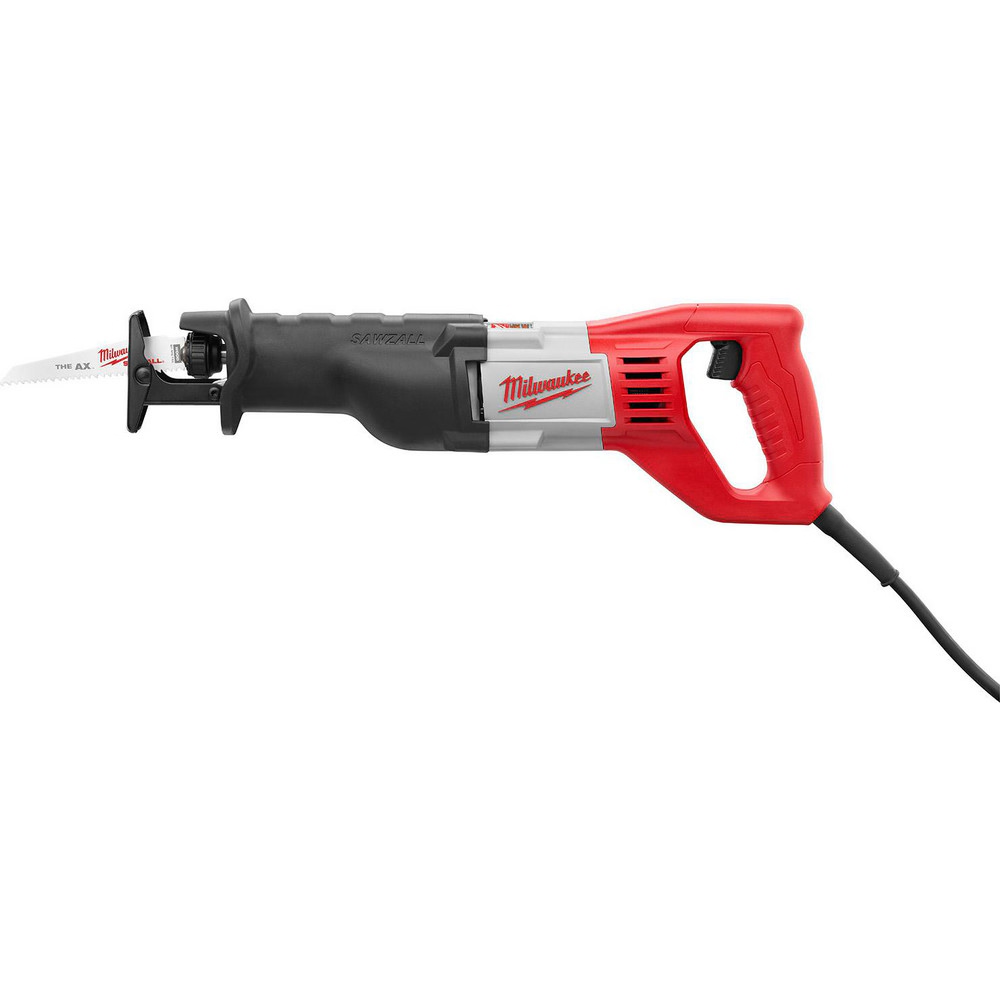
Choosing the Right Reciprocating Saw
When selecting an electric reciprocating saw, there are several factors to consider:
- Power: The power of the saw is determined by the motor’s amperage. Higher amperage saws are better suited for heavy-duty applications.
- Blade capacity: The blade capacity refers to the maximum length of blade that the saw can accommodate.
- Ergonomics: A comfortable grip and well-balanced design can help reduce fatigue and improve accuracy.
- Features: Some saws have additional features, such as variable speed control, LED lights, and dust collection systems.
Popular Applications
Electric reciprocating saws are used for a wide variety of tasks, including:
- Demolition: Removing walls, floors, and ceilings
- Renovations: Cutting through drywall, framing lumber, and plumbing pipes
- Tree trimming: Pruning branches and removing limbs
- Metalworking: Cutting through pipes, sheet metal, and rebar
- DIY projects: Building furniture, installing cabinets, and making repairs
Safety Tips
- Wear protective gear: Always wear safety glasses, gloves, and a dust mask when using a reciprocating saw.
- Use the right blade: Select a blade that is appropriate for the material you are cutting.
- Maintain a firm grip: Hold the saw firmly with both hands to control the blade.
- Avoid cutting overhead: Cutting overhead can increase the risk of the blade binding and causing an accident.
- Inspect the blade regularly: Check the blade for damage before each use.

Personal protective equipment and safety precautions to take
When using an electric reciprocating saw, it’s crucial to prioritize safety to prevent accidents and injuries. Here’s a list of essential personal protective equipment (PPE) and safety precautions to follow:
Essential PPE:
- Safety glasses or goggles: These protect your eyes from flying debris, such as sawdust, metal shavings, and broken pieces of material.
- Hearing protection: Earplugs or earmuffs can help protect your hearing from the noise generated by the saw.
- Gloves: Wear heavy-duty work gloves to protect your hands from cuts and splinters.
- Dust mask: A respirator mask can help protect your lungs from inhaling dust and other airborne particles.
- Long sleeves and pants: Loose-fitting clothing can get caught in the saw, so it’s best to wear long sleeves and pants to minimize the risk.
- Steel-toed boots: Protect your feet from falling objects and potential injuries.
Safety Precautions:
- Inspect the saw: Before each use, inspect the saw for any damage, loose parts, or frayed cords.
- Use the right blade: Select a blade that is appropriate for the material you are cutting. A dull or damaged blade can increase the risk of accidents.
- Secure the workpiece: Ensure that the workpiece is securely clamped or held in place to prevent it from moving during cutting.
- Maintain a firm grip: Hold the saw firmly with both hands to control the blade.
- Avoid cutting overhead: Cutting overhead can increase the risk of the blade binding and causing an accident.
- Keep the blade clear: Avoid touching the blade or placing your hands near it while the saw is running.
- Use a work surface: Work on a stable, level surface to prevent the saw from tipping over.
- Be aware of surroundings: Be mindful of your surroundings and avoid cutting near other people or objects.
- Unplug the saw when not in use: Disconnect the saw from the power source when you are finished using it or taking a break.
By following these safety precautions and wearing the appropriate PPE, you can significantly reduce the risk of accidents and injuries while using an electric reciprocating saw.
Maintenance and Care
Proper maintenance is essential to ensure the longevity and performance of your electric reciprocating saw. Here are some tips:
- Clean the saw regularly: Remove any debris or sawdust from the saw and blade.
- Lubricate moving parts: Apply a light coat of lubricant to the reciprocating mechanism.
- Inspect the cord: Check the cord for damage and replace it if necessary.
- Store the saw properly: Store the saw in a dry, secure location.
Tips for maintaining and prolonging the life of the tool
Proper care and maintenance can significantly extend the lifespan of your electric reciprocating saw. Here are some tips to keep your tool in optimal condition:
Regular Cleaning
- After each use: Wipe down the exterior of the saw to remove dirt and debris.
- Periodic deep cleaning: Remove the blade and clean the blade holder, motor vents, and other interior components. Use a soft brush or compressed air to remove dust and particles.
Blade Maintenance
- Inspect for damage: Before each use, check the blade for chips, cracks, or excessive wear.
- Replace worn blades: A dull or damaged blade can strain the motor and reduce performance.
- Use the right blade: Choose a blade that is appropriate for the material you are cutting to avoid excessive wear and tear.
Lubrication
- Check the manufacturer’s recommendations: Consult your user manual for specific lubrication guidelines.
- Lubricate moving parts: Apply a small amount of lubricant to the reciprocating mechanism and other moving parts as needed.
Cord Care
- Inspect for damage: Regularly check the cord for cracks, cuts, or frayed wires.
- Replace damaged cords: A damaged cord can pose a safety hazard and should be replaced immediately
Storage
- Store in a dry place: Avoid storing the saw in damp or humid environments.
- Keep it clean: Store the saw with the blade removed and the exterior cleaned.
- Secure the blade: If you must store the blade attached, secure it to prevent accidental injury.
Avoid Overloading
- Use the right saw: Choose a saw that is powerful enough for the task at hand, but avoid overloading it.
- Take breaks: Allow the saw to cool down periodically to prevent overheating.
Professional Maintenance
- Regular inspections: Consider having your saw inspected by a professional periodically for any internal issues.
By following these tips, you can help ensure that your electric reciprocating saw remains in top condition and provides years of reliable service.

The electric reciprocating saw is a versatile and powerful tool that can be used for a wide range of tasks. By understanding the key features, benefits, and safety considerations, you can choose the right saw for your needs and use it effectively and safely.




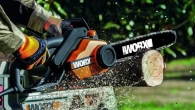

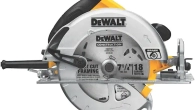
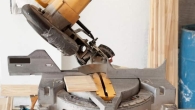
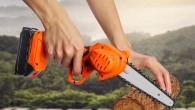


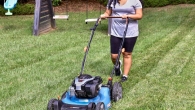
Leave a Reply